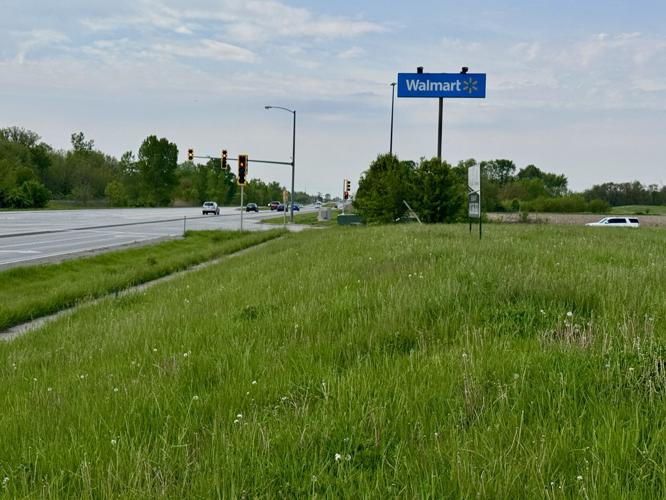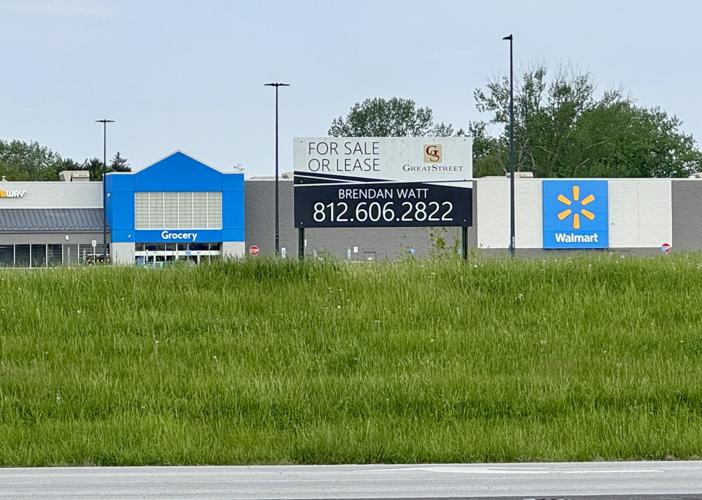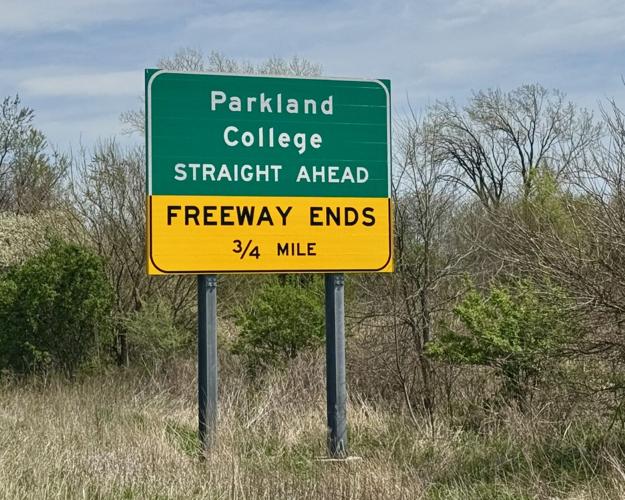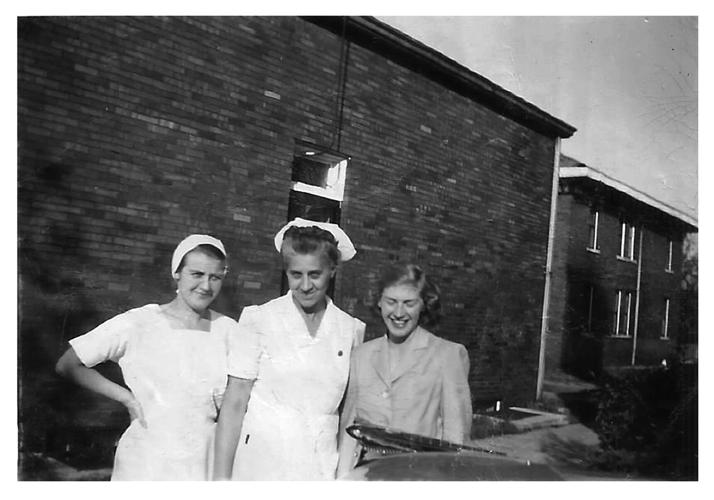Drop in a question of your very own BY CLICKING HERE or by emailing Kathy Reiser at mailbag@news-gazette.com.
Resources for state of Illinois employees who have important insurance decisions to make in the next few weeks … several restaurant-related news items … and whether early interstate-highway planners ever considered running I-72 through C-U. All in this week's Mailbag.
Continuity of care after Health Alliance coverage expires

“Springfield Clinic sent its patients information about what coverages the other state of Illinois insurance providers would give for doctors whom patients with Health Alliance have previously seen. Do Carle and Christie clinics plan to do the same?”
As readers may know, thousands of state employees, including many who work at the UI, are affected by the discontinuation of Health Alliance insurance programs. Health Alliance will remain in business until the end of 2025, but the company’s coverage for benefits-eligible state employees will end with the close of the current fiscal year on June 30.
I checked with Champaign County’s three main health care systems — Carle Health, Christie Clinic and OSF HealthCare — and all three say they offer online resources that should help state employees make their best decisions during the current Benefit Choice insurance enrollment period that ends June 2.
Carle Health spokesperson Brittany Simon said patients are encouraged to compare options.
“For state of Illinois employees, Open Access Plans often offer the most freedom to stay with providers like Carle Health," she said.
She also recommends confirming plan details with the employer’s human-resources benefits team or insurer, especially details on networks and coverage tiers. She said the ChooseCarleHealth.org website includes “consolidated research, detailed coverage breakdowns and … the most up-to-date list of health plans accepted at Carle Health.” That list is at carle.org/patients-visitors/health-plans-accepted.
Christie Clinic’s Melissa Tepovich said a clickable alert banner at the top of the christieclinic.com homepage directs users to a page that lists Christie’s accepted health plans.
Spokesman Tim Ditman said OSF HealthCare participates in many of the health plans available to state employees and others. He suggests they visit osfhealthcare.org and look for the "Billing, Insurance & Financial Assistance" tab. The listing of accepted plans is at osfhealthcare.org/patients-visitors/billing-insurance/Insurance/insurance-plans-accepted.


McDonald’s still planned for Savoy
“McDonald’s got the OK to build on a lot east of the Savoy Walmart, and they expected to break ground in April. The ‘for sale or lease’ sign is still up, and there’s no hint of construction activity. Is McDonald’s still coming to Savoy?”
Yes. Mayor John Brown said a few days ago that the village “anticipates construction to begin very soon, and appreciates how the project team is deliberately and professionally working to secure the needed local, county and state permits. We hope your readers are as excited about this development as we are.”
The restaurant will be built at 509 S. Dunlap Ave., just south of Loving Paws Pet Clinic.

Was I-72 originally planned to cut through C-U?
“Did highway planners originally call for I-72 to cut across University Avenue, then join directly to I-74 at the East University Avenue exit?”
Interstate highways did end up bisecting some established communities, so the reader’s question is … intriguing. I asked staff at the Illinois Department of Transportation whether IDOT’s archives might hold any clues about the earliest proposed routings of Interstate 72.
“No one in our Systems and Services Unit in District 5 is aware of anything showing I-72 connecting directly to I-74, even in a proposal,” said IDOT engineer Kensil Garnett. “They looked through several Eisenhower Interstate documents looking for a proposal map, but I-72 was never part of the original system maps, like I-74 was, and was added later.”
The first segments of I-72 were built in the late 1960s, and the 79-mile highway between Champaign and Springfield was completed in 1976.
The U.S. interstate system — known formally as the Dwight D. Eisenhower National System of Interstate and Defense Highways — actually got its start long before Ike became president. According to the Federal Highway Administration website, planning for the system began in the late 1930s. In the Federal-Aid Highway Act of 1944, Congress called for a National System of Interstate Highways that would include up to 40,000 miles, "so located, as to connect by routes, direct as practical, the principal metropolitan areas, cities, and industrial centers …”
Garnett said that even in 1948, planners would have encountered significant barriers to converting University Avenue into an interstate highway. The costs of acquiring enough property for a four-lane divided highway, plus ramps and rights-of-way, would have been staggering — and for what benefit?! The central portions of Champaign and Urbana would have been obliterated.
Several parks, the current Champaign Central High School, Dr. Howard Elementary School, countless homes and apartment buildings, railroads and Carle Foundation Hospital “all existed in 1948 and had their access along University Avenue,” Garnett said. “By 1960, when the Eisenhower system was being planned and built, Carle had already started expanding closer to the roadway, and by 1969 was close … as you see it today. Likely the same with other destinations along the route.”
He said I-72 “basically became a new alignment for Illinois 10 and Illinois 47 like the I-74/U.S. 150 and I-70/U.S. 40 alignments. The state statute required state highways to enter municipalities and be marked on city streets through the communities. (Illinois) 10 followed this through Champaign and along Main Street in Urbana to the east side of the cities. I-74 was constructed first and did not directly tie into Main Street in Urbana. Over the years, the county highway now known as Illinois 130 was realigned easterly to move it out of Urbana.”
Garnett noted that later initiatives to provide east-west routes through C-U — namely Windsor and Curtis roads — were led by the communities.
“IDOT tried to expand Illinois 10 into a multi-lane facility in the 1970s but received so much adverse public reaction that it was dropped,” he said.

Congolese restaurant moving to downtown Champaign

“I noticed a Les Gourmets Cuisine ‘coming soon’ poster in the window at 113 N. Walnut in Champaign. Is that the same Les Gourmets that recently closed at the Broadway Food Hall in Urbana?”
“Of course it is the same one,” said owner Christelle Muanza. The Congolese/African eatery has relocated to downtown Champaign. The menu will be “almost the same” but with a few more items. She said she is hoping to reopen in the new, larger space later this month.
The restaurant’s entrees include fish, pork, beef, chicken, goat, pasta and legume-based dishes. Kwanga, plantains and fufu are among the available side dishes.
Recycling tires in the C-U area
"Is there anywhere in Champaign-Urbana that recycles tires, on or off the rims? Is there a cost to recycle them?"
The best answer may depend on how big a hurry the reader is in — and whether they’re also in the market for new tires.
The Illinois Environmental Protection Agency's website says the best way to get rid of used tires is to leave them with your retailer when you buy new ones. Retailers are required by law to accept a quantity of used tires equal to the number of new tires purchased. The state assesses a $2.50-per-tire user fee charged to customers on the price of new and used tires sold at retail in Illinois. Individual retailers may charge their own fee in addition to the state fee.
The IEPA says this fund gives state governmental agencies the financial resources necessary for tire-pile cleanups, inspection and enforcement activities, market development for tire-based products, and mosquito-related disease research and control. Piles of used tires, kept outdoors, are prime breeding habitats for mosquitoes that carry disease.
The city of Champaign’s recycling website has a handy listing of local places that accept various items for recycling, including tires. Find it at champaignil.gov/public-works/recycling/where-do-i-recycle-it/, and then click on "Tires" in the listing. Some retailers will accept used tires without the purchase of new ones, but their policies and any added fees are up to them.
Now ... if you have some unneeded tires and you’re not in a huge hurry to recycle them, the Champaign County Environmental Stewards group is planning a tire-collection drive that is tentatively scheduled for Thursday, July 31 and Friday, Aug. 1, and the morning (only) of Saturday, Aug. 2. The C-U Public Health District’s headquarters will serve as one host site, and the other is to be determined.
CCES Executive Director Susan Monte says details will be finalized and announced by the end of this month. Meantime, she expects this year’s tire-collection event will work much like the 2022 event did. Participation will be limited to Champaign County residents only; no salvage yards or retailers will be allowed to drop off tires. Champaign County residents will be limited to 10 tires each, and they will be collected for free.
Passenger vehicle and truck tires of 17 inches and smaller, on-rim or off-rim, will be accepted. Oversize tires, including those for agricultural and commercial vehicles, will not be accepted.
The 2025 residential tire collection will be offered on a first-come/first-served basis.
“Once the on-site trailer reaches capacity, the residential tire collection is ended,” Monte said.
So if you have several old tires you really, really want to get rid of, plan to stop by toward the beginning of the event rather than at the end.

What’s the story behind McKinley Place?
“At Columbia and McKinley avenues in Champaign, there’s a brick pedestal with an engraving that says McKinley Place. Did William McKinley develop that neighborhood?”
I’ve not uncovered any evidence that he did.
Students of local history may know that Champaign entrepreneur William B. McKinley bought the horse-drawn Urbana and Champaign Street Railway in 1890. Within a few decades, he parlayed that investment into a vast “interurban” electric railroad that connected St. Louis to Peoria and Danville to Springfield — as well as countless small towns and whistle stops in-between. To power his railroad, he brought together several local utility companies ... and then a few more ... and by 1923, he was instrumental in forming the Illinois Power & Light Company.
He served as U.S. Congressman for this part of Illinois from 1905 to 1921, and served one term as a U.S. Senator from 1921-1926. He died in December 1926.
McKinley made a fortune in his lifetime, and he gave a lot of his money away.
He was the CEO of the Illinois Traction System interurban, which accessed St. Louis via the McKinley Bridge that was named after him. He donated the money to establish the UI’s McKinley Hospital in 1925; today, we know it as McKinley Health Center. He was a major benefactor of the McKinley Presbyterian Church on the UI campus; it was built in 1911-12, and the church was named after his father, the Rev. George McKinley. The former McKinley YMCA on Church Street in Champaign was established in 1938 with a bequest from the late senator.
Even with all of those enduring landmarks and institutions bearing the McKinley name, city planner and local historian T.J. Blakeman said he doesn’t believe the wealthy entrepreneur/politician founded the small residential subdivision near Columbia Street and McKinley Avenue in Champaign — or that it was named by him, in his own honor.

“William McKinley never ran a company town," Blakeman said. "It was more likely the subdivision taking the name of the street."
Sanborn Fire Insurance maps from 1924 show a McKinley Place neighborhood — but with only a half-dozen homes, all of them facing McKinley Avenue.
Blakeman said if William B. McKinley did have anything to do with naming the subdivision, “it probably would have been named for one of his parents. He named a lot of things in their honor, not his own.”
Becky Denzer, who has lived in McKinley Place for more than 35 years, said there used to be two brick pedestals marking the neighborhood’s McKinley Avenue entrance — at the northwest and southwest corners of McKinley and Columbia. Both pedestals have been hit by vehicles multiple times over the years, and only the one at the southwest corner of the intersection is still standing.
Is the Spice Box still open?
“Has the UI discontinued its themed meals at the Spice Box? I looked for the schedule online and couldn’t find it.”
The Spice Box at Bevier Hall is still very much in business — though it runs on a limited spring-semester-only, Wednesday-and-Friday-evenings schedule. Spring-semester finals week is underway, so the Spice Box is done serving meals for now.
Jill Craft, UI hospitality management program coordinator, said the themed dining events in the Spice Box will return next spring. The new schedule of events will be posted in January. For more information, visit spicebox.illinois.edu.
The student-run restaurant hosted about 18 meals during the 2025 spring semester. Seniors enrolled in the capstone "Management of Fine Dining" course plan and supervise the meals — “never the same meal twice” — with the help of underclassmen enrolled in an introductory course. Each senior is tasked with choosing a theme, and is responsible for planning the meal, supervising its preparation and service, and many other aspects of the fine-dining experience.
The spring semester 2025 themes included "Momo & Mirth: Japanese Izakaya"; "Casa Saigon: Vietnamese-Mexican Fusion"; "Shred & Savor: A Classic Rock-inspired Menu"; "Key Lime & Co: Cuisine from Key West"; and "Dee Dee’s: Upscale Soul Food."
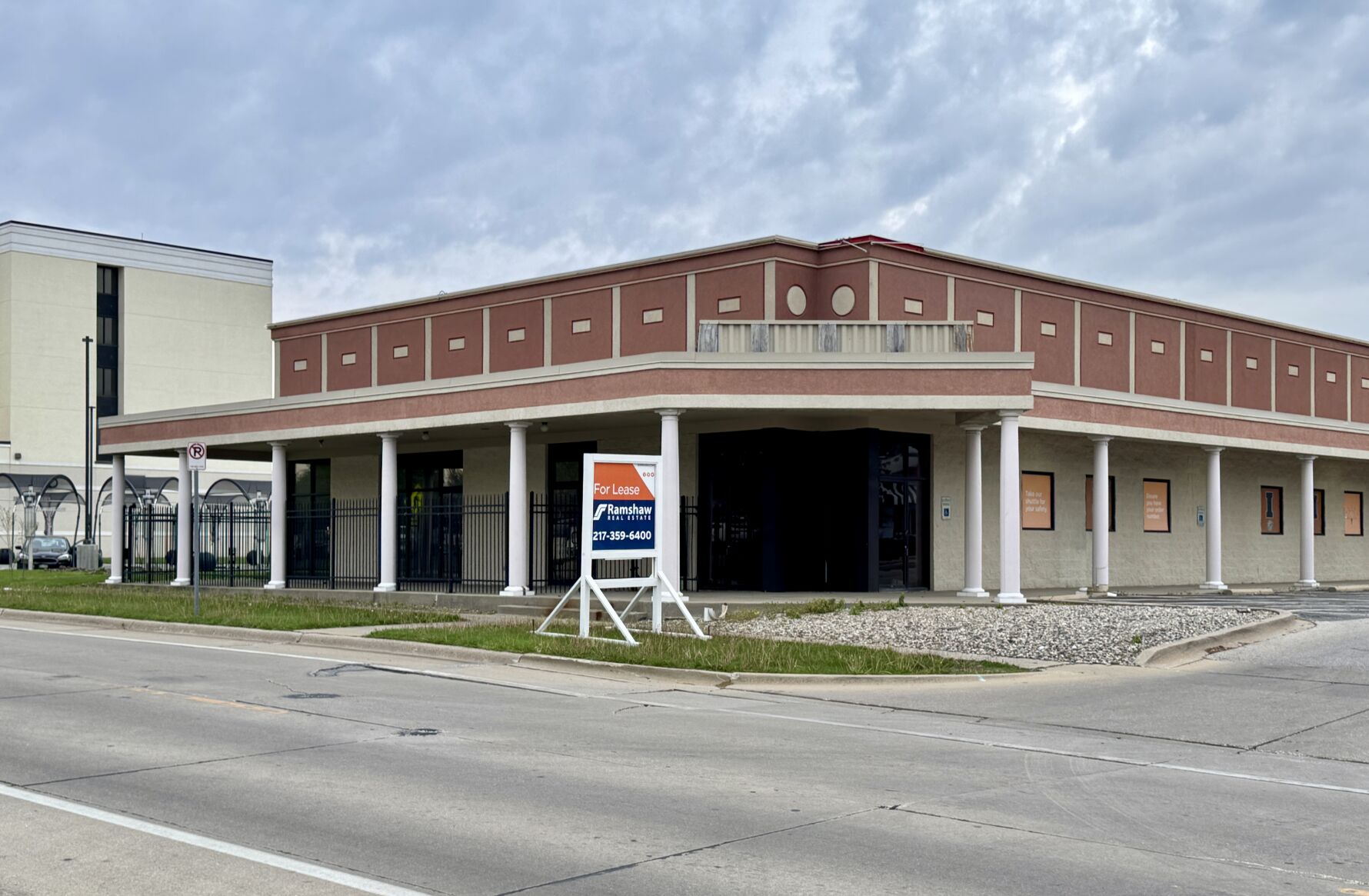
What happened to planned Peruvian restaurant?
“Can you find out what happened with the Peruvian restaurant that was supposed to open in the old Hooters?”
In June 2024, Adamaris Vicente told News-Gazette reporter Jana Wiersema that her family planned to open El Trujillanito Kitchen and Bar at 1706 S. State St. in Champaign in August. By late July, the opening had been delayed because the family was awaiting delivery of a key piece of machinery from Peru. Since then, the business’ online presence, a Facebook page, seems to have been deleted.
Ramshaw Real Estate agent Jordan Dunahee said this week that he “can confirm the property is available for lease. There are currently no active restaurant leads for this location. However, ownership would certainly look forward to an offer from the Peruvian restaurant.”
The real-estate listing describes the 6,584-square-foot building as “flex space” that could easily be converted for retail, office and/or storage use.
The building on State Street originally was home to Time Out Sports Bar and Grill. It became a Hooters in 1998, and it lasted until late 2019. After that, it was briefly the home of the Champaign County Republican Party.

Hazy evenings in Glenn Park
“With cannabis sales now legal in Illinois, is pot-smoking allowed in local parks? I sometimes walk through Glenn Park in the evening and it gets a little … uh, aromatic there.”
“Consumption of cannabis is never permitted in our park spaces,” said Champaign Park District Executive Director Sarah Sandquist.
Outdoor smoking and vaping of tobacco products is permitted, but it cannot take place within 15 feet of buildings and structures, per Illinois law.

More on the county polio ward
In last week’s Mailbag, we shared some history of the Champaign County Poor Farm and its Poor House that eventually became the first Champaign County Nursing Home facility in east Urbana.
Mary Butzow, a lifelong history buff from St. Joseph, dropped us a note about a personal connection her family had with the isolation/contagion unit that was added to the Poor Farm in 1936. It was built primarily to house and treat polio patients.
“In July 1949, Aunt Esther (Maron) was hired as the 3-11 p.m. charge nurse at the special isolation polio ward set up in the smaller hospital building on the grounds of the Champaign County Nursing (Home) property. Attached is a picture of the three charge nurses — evenings, days and nights. Esther is on the left in scrubs. Unfortunately, she does not remember the names of the other nurses.
“Also attached is a picture of Esther and the last two patients from the special ward being transferred to Burnham Hospital for further care. Esther is holding the charts and bending over to talk with one of ‘her guys.’”



